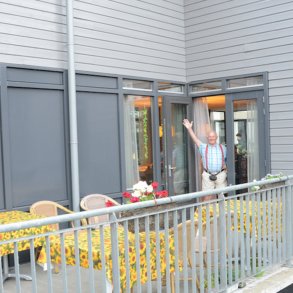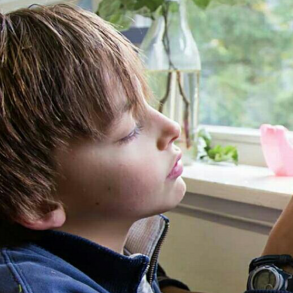By Christopher Bagley for Enlivening Edge Magazine
Introduction by Jean-Paul Munsch, Guest Editor of EE Magazine’s Education edition:
What is actually going wrong in education? We are stuck somewhere. And this article shows clearly where some of our biases lie. And it shows two junctions where the stuck can start disentangling.
If human beings hunger for development and if every individual is striving for his or her own potential then education is the place where our heads, hearts, and hands should be nourished. The following article offers food for thought, encounter and action.
The term education is derived from the Latin word ‘educare’. ‘Educare’ means ‘to bring up‘ and ‘to nourish‘. But what’s happening in the British ‘Education’ system, particularly in secondary schools is far from nourishing. What I observe as a Psychologist, is an overwhelming practice of ‘imperium’: to ‘control’ or exact ‘power’. Those who cannot conform are either discarded like the broken parts of a rusty machine, or muddle through with their spirit crushed. Of course there are exceptions, but in my experience this represents the norm. Due to an exam-obsessed culture, teaching and learning are mostly comprised of rote learning and parrot-fashion fact regurgitation, forcibly applied to all young people regardless of their individual strengths, intelligences, and difficulties. There is nothing inevitable about this.
Below are two ways that secondary school education could more effectively nourish young people, build their sense of autonomy, and support them in exploring their individual intelligences and competences.
Redefine intelligence
Psychological research is clear: intelligence cannot accurately be measured using standardised assessments;
“academic” intelligence is one island in an infinite ocean of intelligence possibilities.
Howard Gardner’s multiple intelligence theory (1) indicates that human beings possess numerous forms of intelligence; people are clever in different ways.
With this information available, why are bodily-kinaesthetic intelligence (ability to control one’s body movements and to handle objects skilfully), interpersonal intelligence (capacity to detect and respond appropriately to the moods, motivations and desires of others) or intrapersonal intelligence (capacity to be self-aware and in tune with inner feelings, values, beliefs, and thinking processes) not valued or assessed in school? In my view, even Gardner’s description of nine discrete intelligences is a gross over-simplification. It is not possible to separate the properties or label human intelligence using the written word. It is far too complex and mysterious.
On a practical level, the skills that employers most demand are currently missing from the academic assessment process.
If you peruse the National Careers Service website, you are able to look at ‘skills required’ for just about every job accessible in the UK. Guess how many cite ‘essay writing’ as a core skill? According to Prospects UK, who support university graduates into work, the most important skills graduates require are: ‘Good communication’, ‘Effective leadership and management’, ‘Planning and Research Skills’, ‘Teamwork and Interpersonal Skills’ and ‘Self-Management’. None of these skills are assessed via “academic” intelligence tests.
The Department for Education asserts that in preparation for adult life, school should develop the “skills and character to contribute to the UK’s society and economy” (2). The system fails to support many young people in achieving this by ignoring the diversity of intelligence and failing to promote learning in areas that employers actually value. The purpose of education should be to support young people in recognising and acting upon their individual competences, thus ensuring they are autonomous learners.
If young people are treated as intellectual commodities, they will behave as such. They will leave education, as a machine part leaves a factory, with narrow capacities to complete basic functions only. If they are treated as sentient beings, with multiple intelligences that present in wonderfully diverse ways, they will feel autonomous and competent, and will develop a more positive sense of self. Human intelligence is limitless unless it is limited by faulty assumptions about what it is.
All intelligences are equally valuable. There is no hierarchy. The Teal principle of self-management envisions an educational climate whereby young people can draw on their individual intelligences. They need space to learn what their competencies are and how to develop their capacity to pursue them. Only by redefining intelligence and democratising it will young people seek learning due to its inherent satisfaction and understand where their strengths lie. Thus, the twin brothers of powerlessness: resignation and resentment, can be subverted and the full magnificence of creativity liberated.
Start with problems, not curriculum
To effectively nurture a human mind, it is important to recognise that individuals have different competencies and varied ways of interpreting information, solving problems, and creating solutions. Consequently, it is essential that education facilitates the growth of the individual in alignment with their abilities. In the real world, when a problem arises, it is incumbent on people to evaluate the situation, think innovatively, problem-solve together, and create a solution. Secondary school education works in reverse. The textbook has already provided the solutions; it’s called “the curriculum”.
Recently I met a lively, intelligent young man who was finding learning about Ancient Egypt “boring” and “stressful”. I was surprised that a bright, inquisitive child could find such a fascinating topic uninteresting and nerve-wracking. When I asked “Why?” he said, “All we do is read from the textbook and copy out how the pyramids were built and who built them – I’m not good at reading and writing”.
In presenting learning in this way, analytical thinking and creativity are curtailed.
There is no opportunity to innovate or solve problems together; the problems are already solved. How disempowering! How does this teaching method develop a young person’s sense of autonomy and competence? Imagine if teachers were empowered to do things differently. What if young people were presented with a small amount of information about the Pyramids of Giza, for example its location and size alongside a picture? Then they might be asked, “How do you think they were built?” “Why do you think they were built?”
Imagine the fascinating ways that young people with different strengths and intelligences might approach this problem together. Using Gardner’s language, some might engage their bodily-kinaesthetic intelligence and build a pyramid model; others might use their linguistic intelligence and read and/or write about the site; others might draw on their existential and interpersonal intelligence to debate why a society would choose to build them. All of these approaches are equally valid in exploring solutions.
It is heartening to read about other nations such as Finland and a few innovative schools in the UK (School 21 for example) (3) moving towards a holistic, project-based method of teaching. If learning begins with problems and ends with curriculum, young people will develop a sense of autonomy and an understanding of their own competences. Let’s begin asking young people what they think, rather than telling them what to think.
In essence, it is important that education considers young people as a whole. The Teal concept of Wholeness promotes the importance of bringing all aspects of ourselves into our learning. In doing so, young people are able to enhance their self-awareness and will feel empowered to govern their personal development.
Education must nurture the individual intelligences of young people. Teaching needs to begin with problems, not curriculum, to support the nourishment, not the containment, of young minds. Thus, young people can be supported in finding their evolutionary purpose. They can decide who they want to be, not told who they should be. They will gain inherent satisfaction from learning and develop their individual intelligences. They will flourish–and so will we.
References:
(1)
https://www.niu.edu/citl/resources/guides/instructional-guide/gardners-theory-of-multiple-intelligences.shtml or https://www.templateroller.com/template/1561266/howard-gardner-s-theory-of-multiple-intelligences-northern-illinois-university.html
(2) https://www.gov.uk/government/organisations/department-for-education/about
(3) http://www.school21.org.uk/

Christopher Bagley: I am an Educational Psychologist, academic, musician, and writer, currently working in London as a specialist with a Youth Offending Team. My published research has focused on improving outcomes for the most vulnerable, excluded young people and families. I am particularly interested in the emergence and normalisation of ideas in education and society, and how to promote systemic change.





Great article Chris. I appreciate the recognition and validation of the different intelligences and how a TEAL inspired educational system can honour them and help develop them without perceiving them as being in competition with each other.
I am pretty sure there must be many who would appreciate reading this article. What is your suggestion how best to reach out to them?
Kind wishes
Anna
Thanks for your response Anna. I’ve shared the article within my professional network (mainly school and local authority professionals) who are supportive of the conclusions. All my local authority work within schools is under-pinned by the values outlined above. In my experience, to elicit change and genuinely reach out to key professionals working within the current system requires the development of trusting relationships with Headteachers and senior teacher. Once these connections are made it is possible to present a clear rationale, alongside pathways to change. Professionals mostly want to practice in a more child-centred fashion, but require support in having the confidence and wherewithal to do so. It can be difficult for schools to prioritise the inclusion of the vulnerable in a context which subtly incentivises their exclusion. Most school professionals recognise the moral importance of an treating students as individuals, but the constraints of league tables often supercede this. However, it can be done.
Next term, I will be putting together a best practice model, alongside school professionals who successfully integrate and include young people who struggle with the academic curriculum. This model might then be used as a resource to communicate these ideas more widely, to other schools and local authorities. I am hoping to publish the findings.
I would be very interested to hear ideas around how to share the article, and it’s perspective on how to re-structure education, more widely. I’m sure many EE readers and contributers will have knowledge and experience in reaching out further. It would be great to link up with other professionals and interest groups who are doing so. In particular, it would be fantastic to hear from people who have implemented education within a TEAL framework, to consider ways to promote this further. Are you aware of any special interest groups, conferences or forums in which these issues are discussed / good practice is shared?